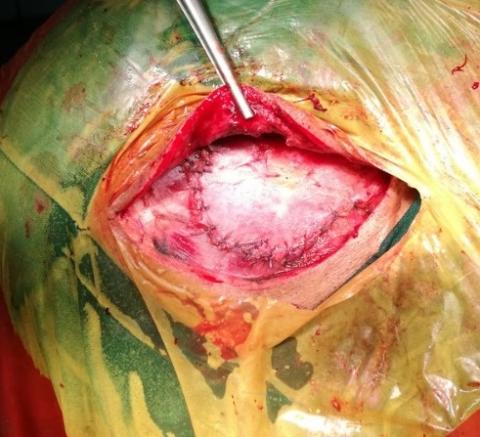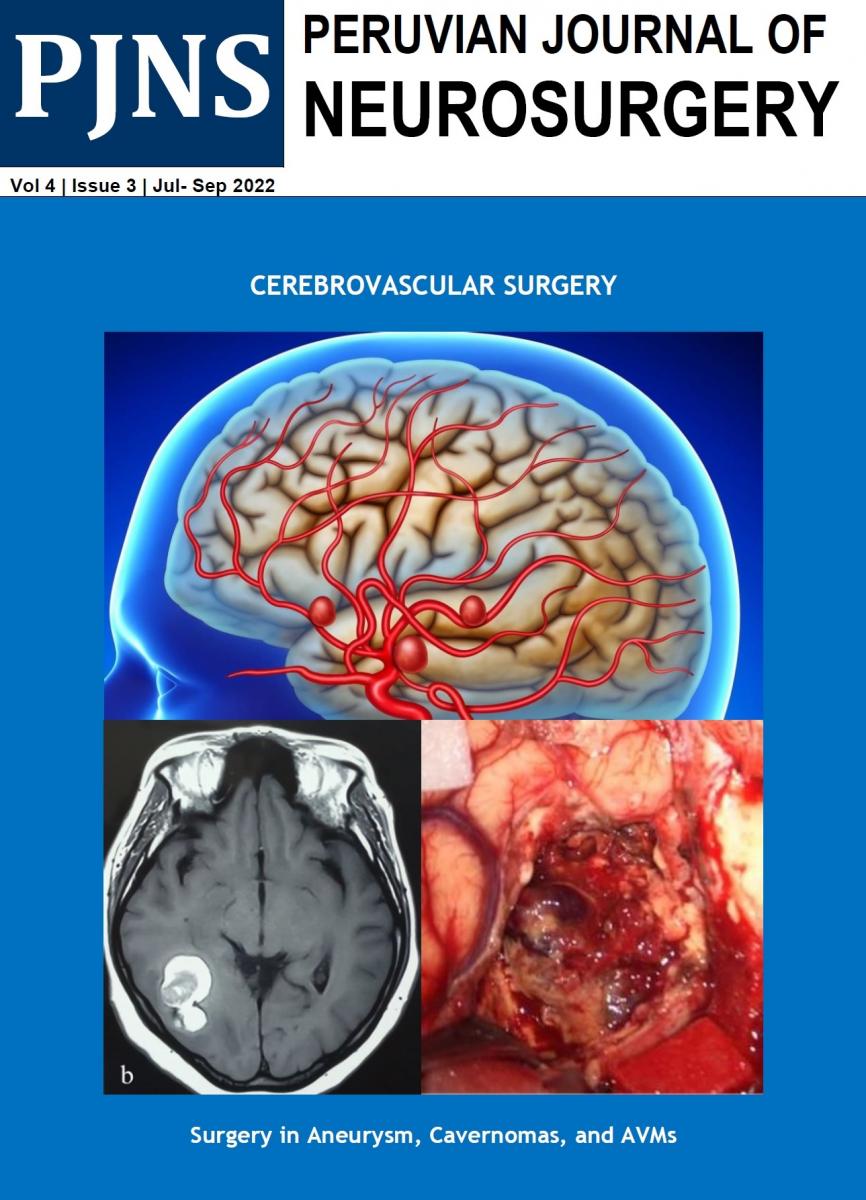Usted está aquí
Peruvian Journal of Neurosurgery
Minipterional interfascial approach for microquirurgical treatment of ruptured and unruptured anterior circulation aneurysms. Initial experience in the Dos de Mayo National Hospital in Lima - Peru
JOSÉ L. ACHA S, HÉCTOR YAYA-LOO, DAVID YABAR B, RITA LOPEZ C
Abstract (Spanish) ||
Full Text ||
PDF (Spanish) ||
PDF (English)
ABSTRACT
|
Objective: To provide information on the experience in the management of ruptured and non-ruptured aneurysms of the anterior circulation through the minipterional interfascial approach, to describe the technique, clinical, surgical results, complications and advantages.
Methods: A retrospective observational study was conducted, from January to December 2018. Of 59 patients with ruptured and non-ruptured aneurysms, 33 were using a minipterional craniotomy. Clinical variables, location, complications and surgical results were analyzed.
Results: In total, there were 33 patients operated by a minipterional craniotomy, 35 aneurysms were clipped: 14 MCA (40%), 13 PComA (37%), 6 AComA (17%), 1 bifurcation of ICA (2%), 1 Choroid artery (2%). Of the total, 11 were men (33%), 22 women (66%). The Hunt and Hess of admission: I in 16 cases (48%), II in 11 cases (33%) and III in 6 cases (18%). There were 3 intraoperative ruptures and 8 radiological clinical vasospasms. Rankin's scale at discharge was: Rankin 0 in 2 patients (6%), Ranking 1 in 11 patients (33%), Rankin 2 in 10 patients (30%), Rankin 3 in 2 patients (6%), Rankin 4 in 1 patient (3%), Rankin 5 in 1 patient (3%) and Rankin 6 in 1 patient (3%).
Conclusions: The Minipterional craniotomy is reliable, less invasive, it maintains the advantages of the pterional approach but avoids greater exposure of the parenchyma and tissue manipulation. Aneurysms of the anterior circulation, ruptured and unruptured, can be treated safely and effectively with limited bone extraction, good cosmetic results and good temporomandibular function.
Keywords: Intracraneal Aneurysm, Craniotomy, Surgical Instruments. (source: MeSH NLM
|



